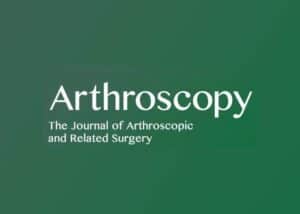
Authors:
Stephen A Parada, Matthew S Griffith, K Aaron Shaw, Brian R Waterman, Josef K Eichinger, Xinning Li, Matthew T Provencher
Abstract:
Purpose: To evaluate whether characteristics such as age, height, weight, sex, or body mass index affected the distal tibial dimensions and radius of curvature (ROC) of a potential donor for anterior glenoid augmentation.
Methods: A retrospective review of magnetic resonance imaging of ankles without bony trauma was performed, and the anteroposterior (AP) and medial-lateral (ML) distances and ROC of the tibial plafond articular surface were measured. Demographic characteristics, including age, sex, height, weight, and body mass index, were recorded.
Results: A total of 141 imaging studies were included (73 men and 68 women; average age, 38.2 ± 12.65 years). All potential specimens accommodated harvest of a 10 × 22-mm distal tibial allograft bone block. Men had greater ML (42.74 cm [95% confidence interval (CI), 42.09-43.39 cm] vs 38.01 cm [95% CI, 37.30-38.72 cm]; P < .001) and AP (38.16 cm [95% CI, 37.47-38.85 cm] vs 34.57 cm [95% CI, 33.97-35.17 cm]; P < .001) dimensions. Significant moderately positive correlations were found for AP dimensions with height (r = 0.584, P < .001) and weight (r = 0.383, P < .001) and for ML dimensions with height (r = 0.711, P < .001) and weight (r = 0.467, P < .001). ROC was positively correlated with height (r = 0.509, P < .001) and weight (r = 0.294, P < .001). Patient age was not related to either the AP or ML distal tibial dimensions or ROC.
Conclusions: After magnetic resonance imaging analysis, all potential donors permitted harvest of a standard-sized distal tibial allograft irrespective of sex or common anthropometric measures, and 85.8% showed distal tibial morphology acceptable for glenoid augmentation. AP and ML graft dimensions and ROC correlated significantly with height and weight.
Level of evidence: Level II, diagnostic study.
For the complete study: Demographics and Distal Tibial Dimensions of Suitable Distal Tibial Allografts for Glenoid Reconstruction